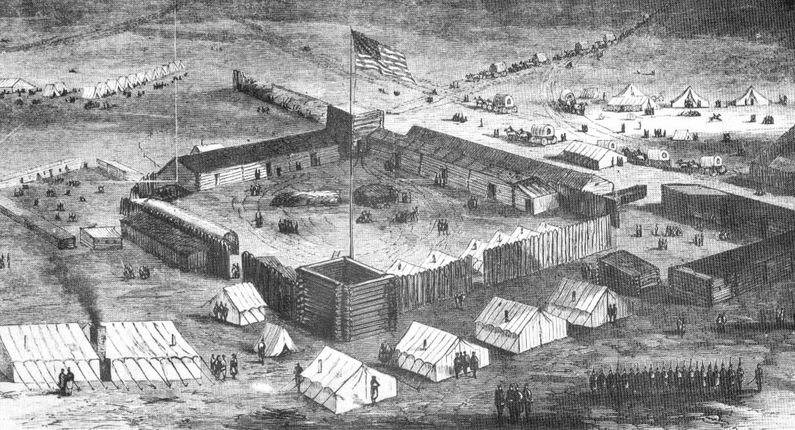Fort Supply (2)
| More information at Warlike, Wikidata, Wikipedia
Fort Supply (2) (1868-1895) - A U.S. Army post established as Camp Supply (1) in 1868 by Captain John H. Page, 3rd U.S. Infantry, near the present-day town of Fort Supply, Woodward County, Oklahoma. Designated Fort Supply in 1878. Abandoned in 1895. Also known as Depot on the North Canadian.
Camp Supply (1868-1878)Established as Camp Supply by Captain John H. Page, 3rd U.S. Infantry on 18 Nov 1868 to support General Philip H. Sheridan's (Cullum 1612) campaign against the plains Indians. The post was located at the confluence of the Beaver River and Wolf Creek in the "Indian Territory" of what is now Oklahoma. As a supply base for campaigns against hostile Indians the garrison constructed a wooden stockade to enclose and protect the stored supplies. The stockade was built with picket style cedar logs in a 150' square with 10' high walls and two 15' high blockhouses located at the Northwest and the Southeast corners. Two 70' long warehouses formed parts of the east and south walls and provided protection for the stores. The 1869 Harpers Weekly drawing above shows the stockade and the tents that housed the troops. On 23 Nov 1868 Lt. Colonel George A. Custer (Cullum 1966) and his 7th U.S. Cavalry departed the camp for the Battle of Washita. On 27 Nov 1868 Custer’s 7th U.S. Cavalry attacked Black Kettle’s Southern Cheyenne camp on the Washita River. Custer's forces included some 570 soldiers while Black Kettle had about 150 warriors and another 100 women and children. Custer's soldiers killed women and children in addition to warriors although the numbers were never confirmed. Custer and his command returned to Camp Supply and on 7 Dec 1868, he and General Philip H. Sheridan left Camp Supply to continue the Winter Campaign of 1868-1869. That campaign ended in March 1869 and Custer and his men returned to Camp Supply on 28 March 1869 with captive Indian chiefs. Between 1869 and 1870 Camp Supply served as a temporary Cheyenne/Arapaho Indian Agency. Between 1874 and 1875 Camp supply acted as the primary supply base for General Nelson Miles' campaign in the Red River War. The stockade only lasted about three years and the wood was reused for firewood and to construct other picket style buildings. In 1873 one of the first frame buildings, the 12-bed Army hospital was constructed but most early construction was still picket style including the officer's quarters. Fort Supply(1878-1894)On 30 Dec 1878 Camp Supply was renamed Fort Supply pursuant to General Order #9. 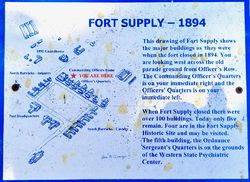 With the designation as a Fort, more permanent style frame buildings were constructed during the 1880s. The frame buildings included Officer's row, Infantry Barracks (north side), Cavalry Barracks (south side) and quartermaster buildings. Construction continued in the early 1890s and the only brick building, the Guardhouse, was constructed in 1892. On 15 Sep 1894 General Order 45, Headquarters of the Army, ordered Fort Supply closed and the post was turned over to the Interior Department on 14 Nov 1894. The post was abandoned by the U.S. Army on 12 Feb 1895.
Current StatusPart of the Fort Supply Historic District, Woodward County, Oklahoma. The Oklahoma Historical Society no longer operates the site. The Friends of Historic Fort Supply now support the site and provide visitor tours. The fort grounds share space with a minimum-security prison and the prison's security fence limits how much of the fort's grounds are accessible. Unfortunately, the area west of the existing officer's row falls inside the prison fence and cannot be visited or photographed. This area includes one of the five remaining fort buildings, the Ordnance Sergeant's Quarters. The replica Stockade and the Guardhouse were the only structures open during our visit in 2019. The interior of the guardhouse has period furnishings and was well done. The replica stockade included most of the features of the original but with just a few interpretive displays. Neither of the officer's quarters was open and the Teamster's Cabin was also closed. If you wish to visit the fort site call (580) 766-3767 to make sure someone is available to show you around. In the winter season, the fort is shown by appointment and it is good to call a couple of days in advance. Remaining & Reconstructed Structures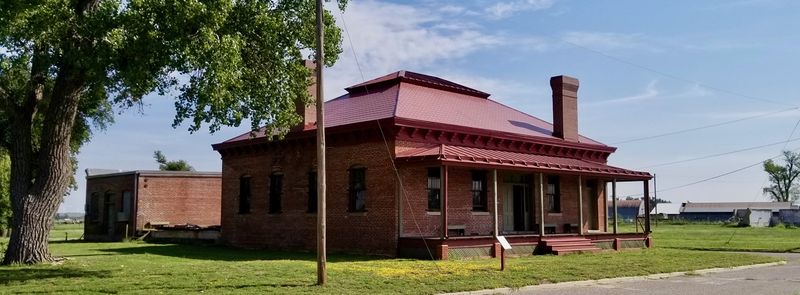 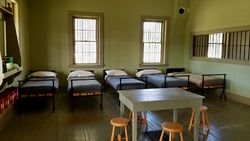 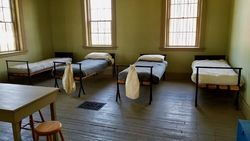 The Guard House built in 1892 was the only brick building built on the post. It provided quarters for the daily detail of enlisted men who would guard the post. It also provided quarters for the Sergeant of the Guard and an office for the Officer of the Guard. Prisoners were also confined in the guardhouse normally in an open bay cell but trouble makers could be confined in "dark cells" under solitary confinement.
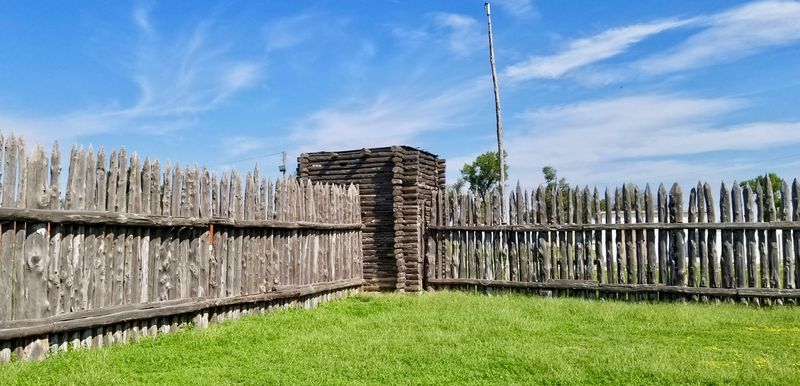 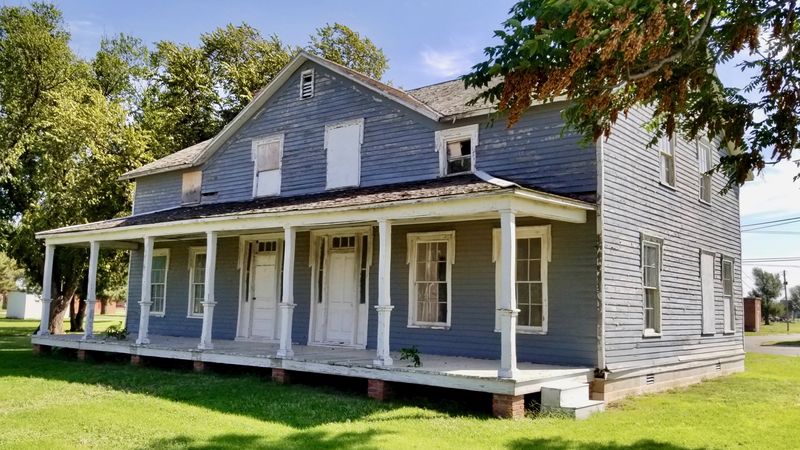 This frame Officer Duplex Quarters was one of nine built at Fort Supply in 1892-1893. This building was built to house two company grade officers families or two single officers on each side. 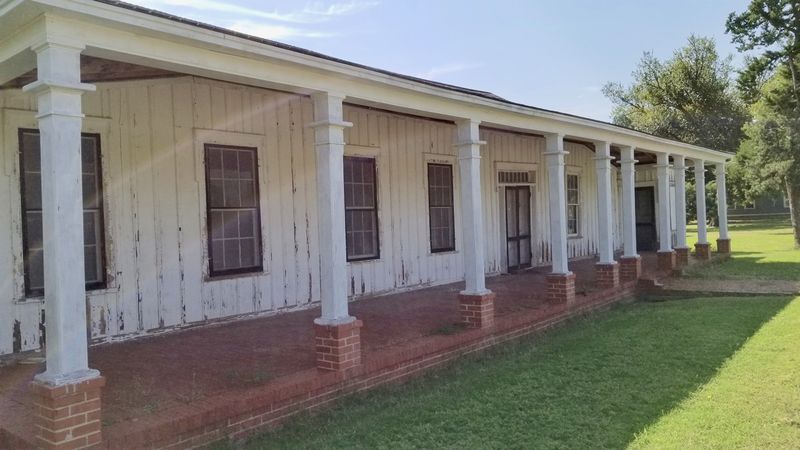 The Commanding Officers Quarters was built in 1878-1879 replacing an earlier picket structure. After the post closed it served as the home of the Western State Hospital superintendent and later as employee quarters. 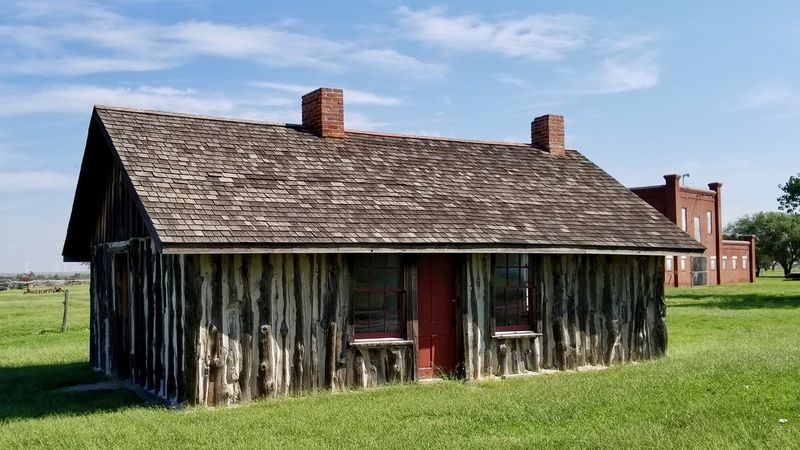 The Teamster Cabin was built in the early 1880s using the vertical log picket type construction. The cabin had two rooms with plank floors and was originally built to house civilian employees of U.S. Army Quartermaster Corps. These teamsters drove the large freight wagons that hauled supplies to the forts and Indian Agencies in the region.
Sources:
Links: Visited: 16 Sep 2019
| |||||||
